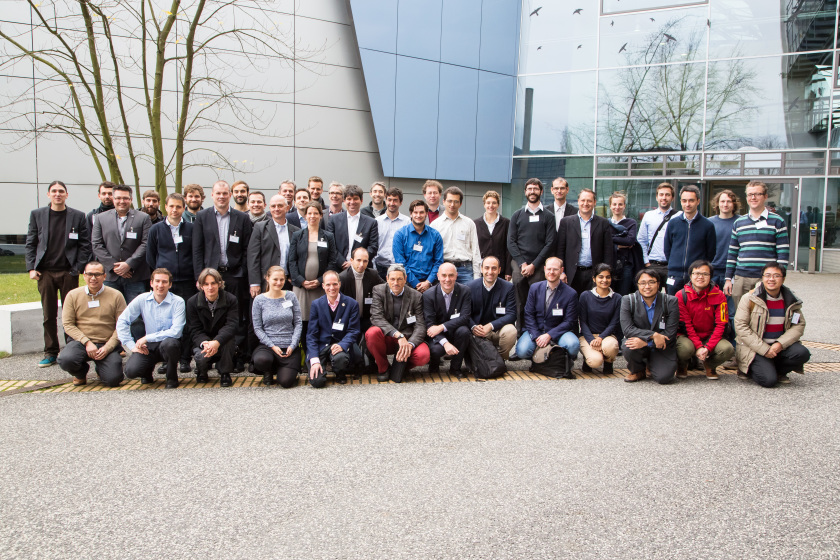European Workshop on Nanophotonics for Solar Energy

Participants of the European Workshop on Nanophotonics for Solar Energy. © HZB
On 25 and 26 November 2015, about 40 researchers from seven European countries visited Helmholtz-Zentrum Berlin to attend the “European Workshop on Nanophotonics for Solar Energy”.
On 25 and 26 November 2015, about 40 researchers from seven European countries visited Helmholtz-Zentrum Berlin to attend the “European Workshop on Nanophotonics for Solar Energy”.
During this workshop, current trends and developments in this field were discussed. Further, future opportunities and possibilities for collaboration were explored during discussions, which were initiated with a talk on funding within the European Commission Horizon 2020 program by Dr. David Kolman from the Brussels Office of the Helmholtz Association. The highlight of the workshop was the Distinguished Lecture by Prof. Thomas F. Krauss from the University of York (UK), in which he shared his vision on the future of Photovoltaics and informed us about the latest research results from his group.
This workshop was initiated and organized by Christiane Becker, Sven Burger and Klaus Jäger within the Berlin Joint Lab for Optical Simulations for Energy (BerOSE), which is a collaboration between Helmholtz-Zentrum Berlin, Zuse Institute Berlin and the Free University Berlin.
Klaus Jäger
https://www.helmholtz-berlin.de/pubbin/news_seite?nid=14387;sprache=en
- Copy link
-
New Helmholtz Young Investigator Group at HZB on perovskite solar cells
Silvia Mariotti is returning to HZB as head of the new Helmholtz Young Investigator Group ‘Perovskite-based multi-junction solar cells’. The perovskite expert, who was previously based at Okinawa University in Japan, aims to advance the development of multi-junction solar cells made from different perovskite layers.
-
Hydrogen storage in MXene: It all depends on diffusion processes
Two-dimensional (2D) materials such as MXene are of great interest for hydrogen storage. An expert from HZB has investigated the diffusion of hydrogen in MXene using density functional theory. This modelling provides valuable insights into the key diffusion mechanisms and hydrogen's interaction with Ti₃C₂ MXene, offering a solid foundation for further experimental research.
-
HZB and National University Kyiv-Mohyla Academy start cooperation in Energy and Climate
Helmholtz-Zentrum Berlin für Materialien und Energie GmbH (HZB) and the National University of "Kyiv-Mohyla Academy" (NaUKMA) have signed a Memorandum of Understanding (MoU). The MoU serves as the starting point for collaborative research, academic exchange, and capacity-building between the two institutions. Actions will be taken to establish the Joint Research and Policy Laboratory at NaUKMA in Kyiv. The aim of the future laboratory is to jointly develop research and policy analysis, focusing on the energy and climate dimensions of Ukraine’s EU integration.
